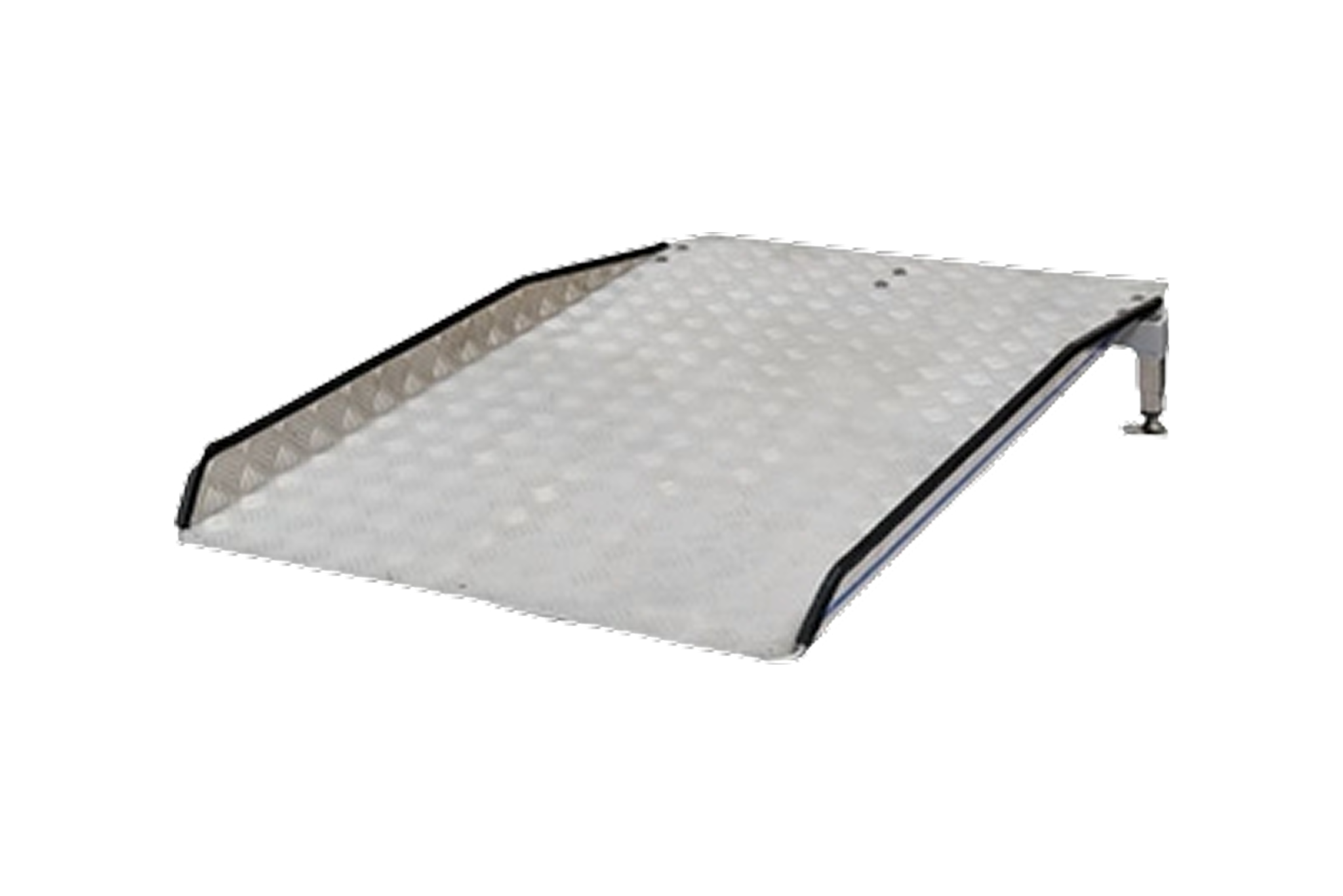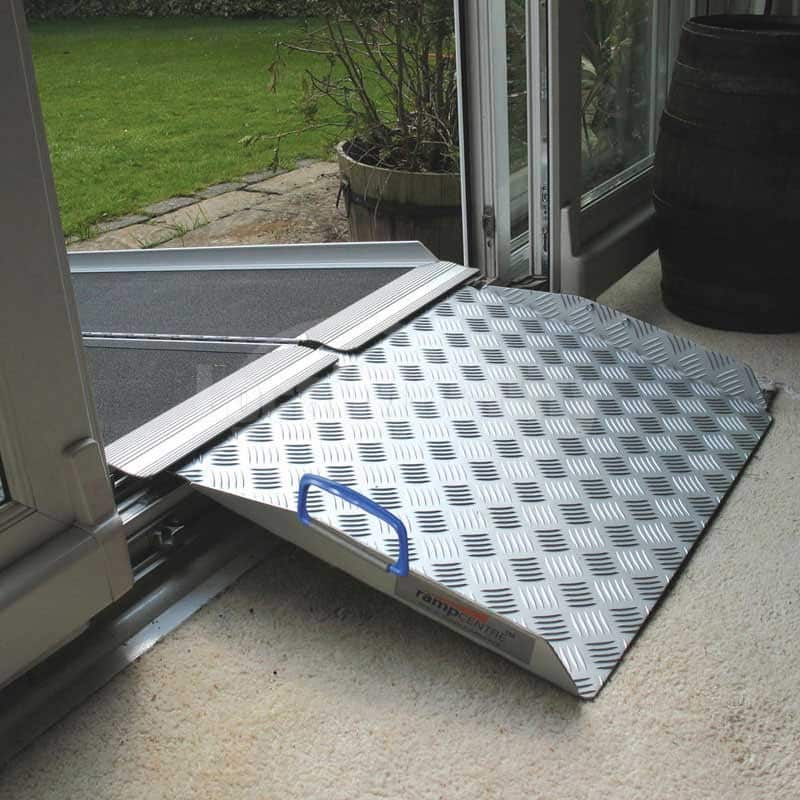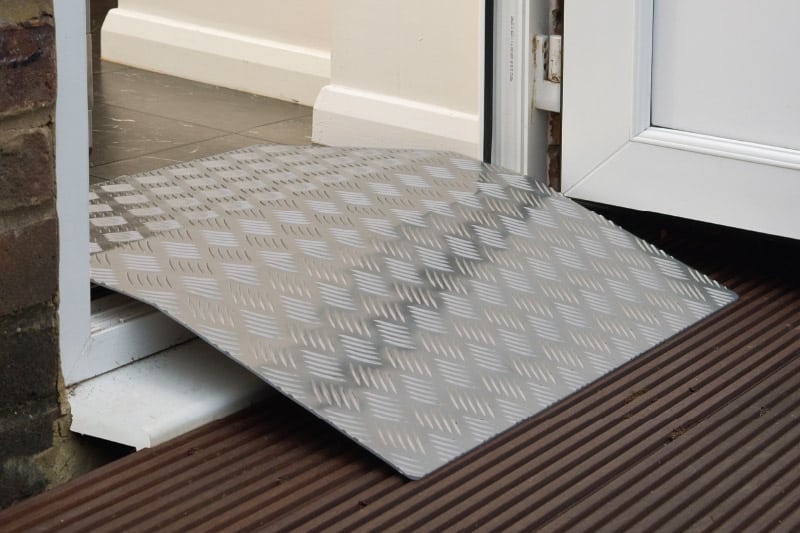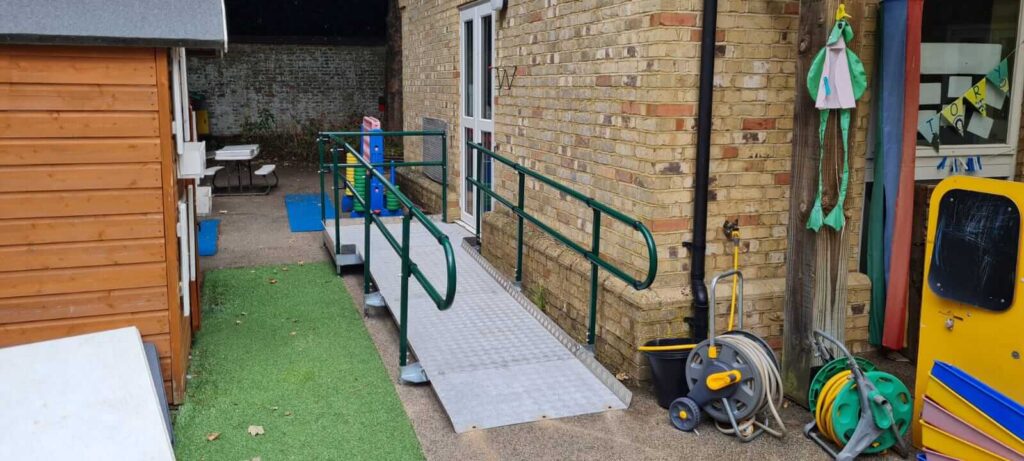
Selecting the right residential ramp plays a vital role in improving accessibility, safety and independence at home. By helping people enter and exit your home without difficulty, a well-designed ramp creates a safer environment, removing barriers and providing peace of mind for users and their families.
The right ramp supports many types of mobility needs. Whether someone uses a wheelchair, scooter or walker, the correct ramp helps them move freely and safely. It ensures that everyone can navigate steps, doorways and other entry points with greater ease. The right residential ramp should provide a solution that suits both the person and the home.
This guide will explain the key points you need to consider when you want to choose the perfect wheelchair ramp for your specific needs.

Before selecting a residential ramp, consider the type of mobility device that will be used with it. Wheelchairs, scooters and walkers each have different requirements. A ramp that works well for a walker may not provide the right level of support for a heavy scooter. Knowing the type of equipment that will be used on the ramp helps you match the mobility device with the perfect ramp, ensuring safe and smooth access.
Your mobility needs should guide your ramp selection. For example, if you use a powered wheelchair or scooter, you may need a stronger ramp with a higher weight capacity. A lightweight portable ramp would suit someone who uses a manual wheelchair, attendant propelled wheelchair or walking frame. It is important to think about how often you will use the ramp and in what settings.
When you choose a ramp for your home, pay close attention to features like width, surface and weight capacity. The ramp must be wide enough for your device, with a non-slip surface to reduce risks in wet or icy weather. A sturdy residential ramp that meets or exceeds the required weight capacity provides confidence and long-term safety.
A well-chosen ramp not only makes daily life easier but also keeps you safe as you move in and out of your home.
You need to carefully assess the available space before choosing a residential ramp. The area where you plan to install the ramp should have enough room not only for the ramp itself but also for safe movement at the top and bottom. A proper landing area at the entry or exit point makes a big difference to comfort and safety.
Look at the clearance at doorways and any thresholds. A small step or raised edge can create a barrier unless you select the right type of ramp. In some cases, a threshold ramp offers a simple solution to help people cross these small changes in level with ease.
You should also consider the gradient or incline of the ramp. A longer ramp creates a gentler slope, which makes it easier for people using wheelchairs or scooters to move up and down safely. A short ramp on a steep slope can cause difficulty and may feel unsafe. Always aim for the gentlest slope possible within your available space.


The slope and gradient of the ramp are key factors for safety and ease of use. A safe incline allows users of wheelchairs and other mobility devices to navigate the ramp without strain or risk of slipping. If you have a steeper or high-rise entrance, you may need a longer ramp or a design that includes a resting platform (to enable the user to stop and rest on a safe level surface, rather than having to stop and rest on a slope)
You must also think about compliance. Modular, semi-permanent and permanent ramps are often required to comply with local authority, ADA standards or building regulations to ensure safe use. Meeting these standards helps protect the user and ensures that your residential ramp meets legal requirements. When you choose a ramp for your home, check that the design follows these important guidelines.
You should choose a residential ramp that can stand up to daily use and changing weather. Common materials that ramps are made from include rubber, aluminium and steel. Each has its benefits. A rubber threshold ramp offers excellent grip and works well for smaller thresholds. Aluminium provides a lightweight and rust-resistant option, ideal for portable ramps. Steel offers great strength and is often used in modular ramps that stay in place for longer periods.
Features like weather resistance and ease of cleaning help the ramp last longer and provide ongoing safety. A durable ramp is a smart investment that supports your mobility needs over time. Always check that your choice fits both your immediate needs and long-term use.
A threshold ramp provides a simple solution for small steps and raised doorways. These ramps help people using wheelchairs, scooters or walkers cross over low barriers without difficulty. You will often find threshold ramps made from rubber or metal. Both materials provide a strong and safe surface that supports daily use.
You can choose a threshold ramp that can be installed permanently or one that remains portable for flexible use. This type of residential ramp works well when you need a quick and cost-effective solution for doorways or other small changes in level.

A portable ramp offers convenience and flexibility. Many people select portable ramps when they need a ramp for occasional or temporary use. These ramps are often lightweight, so you can move them easily and store them when not needed.
A portable ramp works well for travel or visits to places that lack permanent access solutions. Despite their easy handling, these ramps provide the strength and safety required to support wheelchairs and other mobility devices.

A modular ramp provides a more permanent or semi-permanent solution for homes that require ongoing access. Many homeowners choose modular ramps because they offer flexibility. You can tailor the design to fit your space, adjust for gradients and add features such as handrails or platforms.
Systems like the Welcome Modular Ramp System and the Permaramp high-rise ramp kits give you a customisable option that meets both your mobility needs and any specific building regulations. A modular ramp also allows easy changes if your requirements shift in the future.

A high-rise residential ramp suits properties with elevated entrances or steep access points. These ramps help people safely navigate larger level changes that a standard threshold ramp or short portable ramp cannot address.
A bridge-style ramp works well where you need to cross over wider gaps or obstacles. This type of ramp provides a stable and secure path for wheelchairs, scooters, and other mobility devices, helping users move with confidence across complex access points.

To choose the right wheelchair ramp, you need to look at several key factors. First, decide on the type of ramp that best fits your needs. For smaller barriers, a threshold ramp may provide the perfect solution. If you need flexibility, a portable ramp offers lightweight, easy-to-move access. For ongoing use, a modular ramp or high-rise ramp kit can provide a strong, durable solution.
Next, consider the slope. A steep incline can make movement more difficult and unsafe. Longer ramps help create a gentler incline, making it easier for users of wheelchairs, scooters and walkers to move up or down without assistance. Always choose the ramp length that provides the safest gradient for your space.
The width of the ramp matters too. It must provide enough space for the mobility device while also allowing safe clearance on each side. Many residential ramps offer handrail options that add stability. A good surface finish, such as a non-slip coating, helps reduce the risk of accidents in wet or icy conditions.
It is essential to ensure that the ramp fits both your space and your mobility needs. A well-chosen ramp supports independence and confidence. With so many options available, selecting the right ramp for your home comes down to balancing safety, comfort and compliance.
No matter the type of residential ramp you choose, proper installation is vital. Whether you select a portable, modular or permanently installed ramp, safe and secure fitting helps the ramp perform as intended. A well-installed ramp stays stable under load and offers a reliable path for wheelchairs, scooters and other mobility devices.
You also need to consider building regulations and standards. These rules affect ramp selection and design by setting out requirements for features like slope, landing size and handrails. Meeting these standards ensures your residential ramp is safe for daily use and meets legal requirements. It’s important to choose a ramp that complies fully with local standards and is installed by a professional to ensure lasting safety.


At Enable Access, we specialise in providing customisable, durable and fully compliant residential ramps designed to meet your unique requirements. Our wide range of solutions, including the Welcome Modular Ramp System, the Permaramp high-rise ramp kits and our portable ramp options, gives you the flexibility to create safe, long-lasting access that fits your home and lifestyle.
We understand that no two homes or mobility needs are the same. That is why our expert team works with you to design and supply the ramp that best suits your space, your mobility device and your specific challenges. We ensure every ramp we provide meets or exceeds building regulations, so you can feel confident in the safety and reliability of your choice.
Choosing Enable Access means choosing a trusted partner that focuses on quality, safety, and care. Our team is ready to help you find the best solution, from initial advice through to supply and support.
Choosing the right residential ramp empowers greater independence, safety and peace of mind. The right ramp for your home allows you or your loved ones to move freely and securely, no matter what mobility device you use. No matter your mobility device, space or specific requirements, there is a ramp that best suits your needs.
Now is the time to take the next step. Consider your options carefully, seek expert advice and enhance your home’s accessibility today with Enable Access. Contact our team to discuss your needs and discover the best solution for your home.